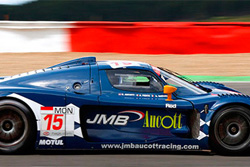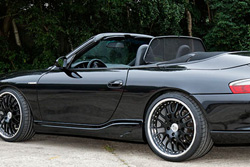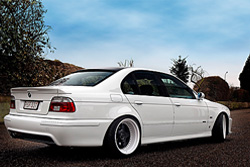LENSES, WHAT DO ALL THOSE CHARACTERS ACTUALLY MEAN ?

Canon EOS 40D - Canon EF70-200mm f/2.8 IS USM - 200mm 1/160 f4.0 ISO 100
Basic level tutorial by Johan
You want to buy a new lens, but all those numbers and characters have got you a little confused ? Fear not, we'll explain them for you.
You've decided it's time to take your equipment collection one step further by adding one or more lenses to your gear, but if you think deciding on your first camera was difficult get ready for a shock, buying a lens is even more complex than buying a DSLR !
First you'll need to decide what kind of lens you want to add to your set first, not all of us can buy every lens they would like to have from the start, so we start with one lens and add along the way, probably getting a long zoom as a second lens, after that a nice wide angle would be a good idea with later on an even longer zoom or perhaps even some primes ... but wait, what do all these names actually mean ?
The focal length or zoom range
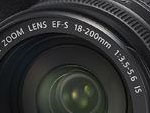 Every single lens will have a certain range, a prime will have only one focal length while a zoom lens ranges between a shortest and a longest length, the example here is a Canon EF-S 18-200mm f/3.5-5.6 IS lens, one of the latest available from Canon and boasting a rather long range : it starts at a wide angle 18mm and goes right up to a telephoto range of 200mm. This is also called an 11x zoom lens, because when dividing the longest range with the shortest range you get about 11, which isn't what you should be looking for. In most cases a decent zoom lens from any make shouldn't be more than 3x or 4x, the higher this figure, the more difficult it is to build a lens that offers sharpness along the entire range.
Every single lens will have a certain range, a prime will have only one focal length while a zoom lens ranges between a shortest and a longest length, the example here is a Canon EF-S 18-200mm f/3.5-5.6 IS lens, one of the latest available from Canon and boasting a rather long range : it starts at a wide angle 18mm and goes right up to a telephoto range of 200mm. This is also called an 11x zoom lens, because when dividing the longest range with the shortest range you get about 11, which isn't what you should be looking for. In most cases a decent zoom lens from any make shouldn't be more than 3x or 4x, the higher this figure, the more difficult it is to build a lens that offers sharpness along the entire range.
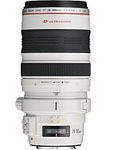 One of those rare exceptions is the Canon EF 28-300mm f/3.5-5.6 L IS USM lens, this one also offers a 10x zoom range, but it actually manages to get some very sharp images along the entire zoom range ... at a price, this big, heavy white bazooka will set you back about 2000 USD.
One of those rare exceptions is the Canon EF 28-300mm f/3.5-5.6 L IS USM lens, this one also offers a 10x zoom range, but it actually manages to get some very sharp images along the entire zoom range ... at a price, this big, heavy white bazooka will set you back about 2000 USD.
Do note that most entry level and semi-professional DSLR have some kind of crop factor, only the Full Frame DSLR have no crop factor, so what does this actually mean ? A crop factor is a calculation that shows the multiplication figure between the standard 35mm slide format and the digital sensor that is installed in the DSLR.
For instance the Canon EOS 40D has a crop factor of 1.6, this means that a 100mm lens actually gives you a range comparable to a 160mm lens on an EOS 40D, Nikon bodies also have a crop factor as most DSLR use a smaller sensor compared to the original 35mm film from the old days.
All lenses show their range based on the old 35mm film format so it is easier to compare lenses among the various makes, do note that some lenses only fit on crop bodies, while other will fit both a crop and a full frame body, we will go into the details below ...
f value
Next to the zoom range of your lens, the f-stop is the most important thing about it, these two figures strongly influence the final price of the lens, a smaller f-value will increase the price dramatically.
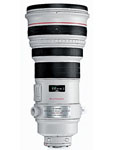 The smaller f-value lenses are also called 'fast' lenses because they allow to capture faster sports by boasting a shorter shutter speed compared to the 'slower' ones, the Canon 400mm f/2.8 L IS USM lens on the left is one of those big guns that all sports photographers would love to add to their gear, it is listed at well over 6000 USD most of the time.
The smaller f-value lenses are also called 'fast' lenses because they allow to capture faster sports by boasting a shorter shutter speed compared to the 'slower' ones, the Canon 400mm f/2.8 L IS USM lens on the left is one of those big guns that all sports photographers would love to add to their gear, it is listed at well over 6000 USD most of the time.
An f-value of 2.8 or less is considered to be a fast lens, while values of 3.5, 4.0 or 5.6 are considered slow, these latter need more light to be able to use a faster shutter speed, either by using a flash or by boasting the ISO setting.
One downside of low f-values is the fact that your depth of field (read all about this in our DOF tutorial) will be very narrow, making your car seem out of focus for most part of a three quarter front shot. So when deciding on your next lens you'll have to it's f-values into account, a small figure will allow your DSLR to focus better in low light conditions, but is useless on cars most of the time as you'll need to dial in a higher f-value to get the entire car in focus.
So what f-value should your next lens have ? I would go for an f/4.0 or lower in fact, these lenses are very good most of the time, and when you dial in a value of 5.6 or 8.0 their sharpness increases dramatically. Most lenses are not at their sharpest when used fully open (meaning their lowest f-value) so you'll have to dial it down anyway, starting with an f2.8 lens you will get extremely sharp images when used at f/5.6 or f/8.0.
The other characters on a lens
Depending on the make of the lens you will find several other designations on it, so we'll try to give you an overview of what you could encounter on your search for an extra lens in your bag.
We'll start with a Canon lens, what kind of extra information can be found in it's name : for instance the EF 70-200mm f/4.0 L IS USM, one of the best Canon telephoto zoom lenses available at this time.
EF means this is a lens designated to be used on the EF lens mount used on all EOS camera's made by Canon, even the early film SLR bodies, so these will cover your every need in case you've got a recent Canon DSLR.
70-200mm is the actual range of this specific lens based on the original 35mm film, ranging from 70mm right up to 200mm makes this lens a nice tele that allows you to get your object closer when standing at a distance.
f/4.0 means this lens has a stable f-value all along it's range, using it at 70mm or 200mm will both allow you to set the aperture to 4.0, a very important feature in this lens.
L is a designation used by Canon to put a lens in their professional range, sometimes also called 'Luxurious' range, these are the best Canon has to offer for us, but they demand a high premium most of the time, these are expensive but generally well worth it in the end.
IS on a Canon lens means that their is an Image Stabilization built into the lens, this means that camera shake is counteracted by gyros inside the lens, so you are able to take sharp images at lower shutter speed without using a tripod, I would suggest getting an IS lens whenever possible, even if these cost more than their non-IS counterparts.
USM is the UltraSound Motor used inside Canon lenses to allow them to focus much faster than their non-USM counterparts, always try to get an USM lens whenever possible, these will make your life around the track a lot easier.
Let's look at another lens in the Canon range, the EF-S 18-200mm f/3.5-5.6 IS
EF-S This is also an EF lens but it can not be used on all Canon EOS bodies as there is an '-S' suffix, which means you can only mount this lens on crop bodies like the 350D, the 450D or the 40D among other, but not on the 10D, nor the 5D or the professional 1D range for instance.
f/3.5-5.6 shows that this entry level lens has a variable f-value which increases as you increase the length of the lens, at 200mm you can only use this lens at f/5.6, not lower, which means you will need a relatively large amount of light to reach a fast shutter speed required for action shots.
There is no USM on this lens, meaning it relies on a micro motor to allow auto focus, this is a slower type of engine which makes this lens unsuitable for action photography in our opinion, it does remain a nice 'walk-around' lens with a very impressive range from wide to telephoto in one body.
We've seen the designations on most Canon lenses on the previous page, but what happens if we are looking into a third party lens from makes like Sigma or Tamron ? Things tend to get a little more complicated here, so read on to understand their differences.
Let's take a closer look at the Sigma 50-500mm f/4-6.3 EX DG APO HSM for Nikon AF D, a highly regarded lens among wildlife photographers boasting a very nice range.
50-500mm makes this a 10x telephoto zoom lens ranging from the 50mm setting often used in portrait photography up to a massive 500mm which is very interesting for track use.
f/4-6.3 tells us this lens does not have a fixed f-value along it's focal range, it even goes up to a rather uninteresting f/6.3 at the long setting of 500mm, you'll be needing a lot of light entering the lens at this setting.
EX is the Sigma way of telling us this is a professional grade lens in their book, these are built like a tank and will be able to sustain a lot of use in their lifetime, some compare the Sigma EX to the Canon L range, but we won't.
DG on a Sigma lens means it was made specifically for Digital SLR bodies by using special coatings on the lenses used on the inside, avoiding flare as much as possible.
APO actually tells you this lens holds special low-dispersion (SLD) glass to minimize color aberration on digital camera's.
HSM is comparable to the USM designation on Canon lenses, the Hyper Sonic Motor from Sigma allows for some very fast auto focus, making these lenses very usable for tracking cars on the track or even birds in the air.
for Nikon AF D, as Sigma builds lenses for varous body makes you will have to select the one that fits your actual DSLR, in this case it means this specific Sigma lens will only fit onto a Nikon DSLR.
Another Sigma lens, this time the 120-400mm DG OS HSM f/4.5-5.6 Canon AF
OS is the Optical Stabilization from Sigma, comparable to Canon's IS it allows you to use much lower shutter speeds while still getting sharp images by compensating the camera movement inside the lens.
Canon AF tells us this specif lens is delivered with a Canon mount, so you can not mount it on a Nikon for instance, only on the Canon EF lens mount.
How about a Tamron SP AF 70-200mm f/2.8 Di LD IF Macro Canon now ?
AF just means this is an Auto Focus lens, something that is a inheritance from the past when people were using manual focus lenses, these days just about all lenses are auto focus ones.
Di is Tamron's way of telling us this lens is designated for Digital SLR bodies by using special coatings on the lenses used on the inside, avoiding flare as much as possible.
IF makes this a internal focusing lens, it does not extend when changing it's focal length to 200mm, a very interesting item when looking for a new lens.
Macro means you could also use this lens for this kind of photography, but if you are really into macro photography you should get special lenses that exist for this purpose.
Let's look at the very popular Nikon AF-S VR 70-200mm f/2.8 G ID ED lens
AF-S is the Nikon lens mount system, these lenses can only be mounted on a Nikon DSLR, no need to buy this lens for your Canon camera.
VR stand for 'Vibration Reduction', Nikon's own system to compensate for camera movement much like Canon's IS, Sigma's OS and Tamron's VC (which stands for Vibration Compensation by the way)
We hope this small overview of some of the most well known makes and models among lenses has made it a little easier for you to decide which lens to buy next, at least you'll now be able to tell the difference among the various makes out there.
The various types among lenses
The telephoto zoom lens
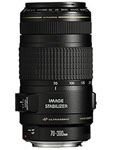 A telephoto zoom is a long lens, most likely starting at 70mm and reaching at least 200mm like the Canon EF 70-200 f/2.8 IS USM we use for our track photography, some start at 50mm or even 100mm and can reach up to 800m in case of the Sigma 300-800mm EX DG f/5.6, the latter will set you back a lot of money, make no mistake about this, but will not be very usable in regular car photography. Ranges up to 800mm are mostly used for wildlife photography and paparazzi shooting, when you really don't want to have your subject know that you are photographing it ...
A telephoto zoom is a long lens, most likely starting at 70mm and reaching at least 200mm like the Canon EF 70-200 f/2.8 IS USM we use for our track photography, some start at 50mm or even 100mm and can reach up to 800m in case of the Sigma 300-800mm EX DG f/5.6, the latter will set you back a lot of money, make no mistake about this, but will not be very usable in regular car photography. Ranges up to 800mm are mostly used for wildlife photography and paparazzi shooting, when you really don't want to have your subject know that you are photographing it ...
In our Base Equipment tutorial we've mentioned getting a set with both the 18-55 and the 55-250 lens, the latter one is in fact a telephoto zoom lens, a basic one that can surely be improved later on, but it is still a nice lens to start with.
When shopping for a longer telephoto zoom lens I would advice to get one with some kind of image stabilization, sure these are more expensive, but trust me, you'll be able to take sharp photographs using shutter speeds that are next to impossible when hand holding your lens.
Wide Angle zoom lens
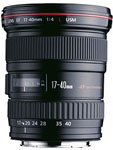 This type of lens is actually your standard lens, it should be a 17mm to 55mm lens or something similar, I wouldn't advice going for lenses like an 18-200mm because there image quality isn't that great.
This type of lens is actually your standard lens, it should be a 17mm to 55mm lens or something similar, I wouldn't advice going for lenses like an 18-200mm because there image quality isn't that great.
On this kind of lenses the image stabilization is not as needed as on the previous telephoto zoom lenses, but we still got the Canon EF-S 17-55mm f/2.8 IS USM for use on our DSLR, the IS sure helps when shooting an interior of a car when you don't have a tripod at hand.
If you've taken a look at our Must have base equipment tutorial you should already own this kind of lens by now, upgrading it is actually dealt with in subsequent tutorials when we take a look at upgrading your basic kit to more specialized lenses.
Ultra Wide Angle zoom lens
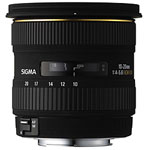 The third kind of lens takes your photography to the next level, an UWA or Ultra Wide Angle is actually a specialized lens that shouldn't be added to your gear until you've managed to master your other equipment.
The third kind of lens takes your photography to the next level, an UWA or Ultra Wide Angle is actually a specialized lens that shouldn't be added to your gear until you've managed to master your other equipment.
These lenses allow you to take a photograph of your car while standing relatively close to it because you capture a wide Field of View, you can actually shoot yourself in the foot with this kind of glass.
There is however a downside to these UWA's, most of the time there is a substantial distortion when photographing a car, some call this a Fisheye effect, the center of the photograph will be larger than the corners, giving the car a rather unrealistic view, if used correctly it can however give some amazing results, but the UWA should be used with care in automotive photography.
Primes or Fixed Focal lens
 Probably the best lens you can buy, but also some of the most expensive ones, especially the telephoto versions like a 300mm or a 500mm, expect to pay prices in excess of 5000 USD for some of these massive lenses.
Probably the best lens you can buy, but also some of the most expensive ones, especially the telephoto versions like a 300mm or a 500mm, expect to pay prices in excess of 5000 USD for some of these massive lenses.
But they also exist in the more normal lengths like a 24mm, a 35mm, a 50mm, an 85mm and so on. Most of these are sold mainly for portrait or macro photography, but these are also very well suited to shoot cars.
One downside of a prime is that you can not zoom to frame the car better, they will force you to use your legs to get a perfect composition of your subject, which also makes you think harder and longer before taking the shot, with a zoom lens you could take a position and adjust the focal length to get the car just right, using a prime you'll have to position yourself relatively to the car for any specific number of mm's.
So why would you use a prime lens ? Because in general they are very sharp and offer a blindingly fast Auto Focus, that is why lenses like the 500mm or the 600mm fixed focals are used around a circuit, they are able to track a car at high speed without loosing focus.
Note : the images on this page have been used for review purpose only, feel free to take a look around for other makes than those mentioned in this tutorial, the final choice of your lens is up to you ...
 |
CPT Premium member BONUS : 69453 If you would like to print the Lenses article you can download our special PDF which is optimized for hardcopy layout. |
Note : commercial use or publishing of our tutorials in any way, written or electronic, is strictly forbidden, we present these for your personal development only. None of our material may be published in any way without prior, written permission from the Car Photography Tutorials founder. All workflows and photographs are copyright protected and owned by the Car Photography Tutorials team unless stated otherwise
Advertisement
Become a MEMBER
Premium Membership
Become a CPT Premium Member and download all our tutorials including a PDF for printing and the result as a PSD file with layers if any.
Interesting articles
10 tips for your first outdoor car shoot
You've managed a nice exotic super car for a private photo shoot, but how do you manage an outdoor shooting ? We will explain 10 of the best tips for you.
Race photography, a day at the track
You must admit that being track side must appeal to you, but it takes some technique to get the best shots from that position, we explain how to get it right.
The secrets behind a great car photo
Ever wondered why your shot doesn't look as good as the one of the same car in that magazine in front of you ? We give you a few tips to take better photographs here.
Filters in the digital age
On a forum you might have red a discussion about using filters before, is it necessary or not ? We give you some tips.
Do I need a fistful of dollars ?
We get this question on a regular basis : how much do I have to invest to get started as a car photographer ? We explain our vision in this article : don't go for the cheapest way but get it right from the start.

